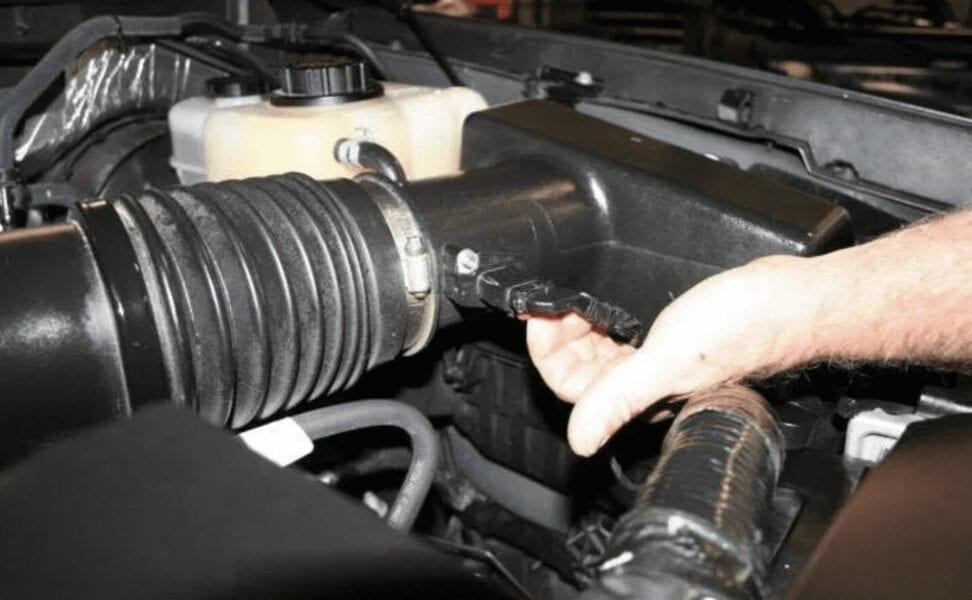
Mass Air Flow Sensor (DFID)
Content
- What are the first symptoms of DFID?
- Check the DFID sensor yourself - five ways to deal with the problem
- Conclusions:
- What is an MAF sensor and what is its principle of operation and function?
- Basic information about the airflow sensor
- Mass Air Flow Sensor Touch Functions
- Processes during engine operation
- Design Features
- MAF Sensor Device Maintenance
- Disadvantages of MAF Sensor Assembly
- How to increase service life
- Major accidents
- Error symptoms
- What is a flow meter
- Types of flowmeters
- Flowmeter working principle
- How air flow sensors work
- The principle of operation of the air pressure sensor
- Signs and causes of errors
- How to check the air flow meter
- Questions and answers:
How to measure engine air flow. The main symptoms of a broken DFID airflow sensor and how to check them
In domestic cars, a frequent reason to visit a service station is a mass air flow sensor. This device is often located next to the air filter and is responsible for the amount of air entering the power supply. By measuring the amount of air, the sensor determines if there are problems with the engine, and also monitors the quality of the combustion chamber and the process of enriching the fuel mixture. These important aspects affect not only engine power, but also operational safety. Often DFID becomes the biggest problem in a car that spoils the driving experience.
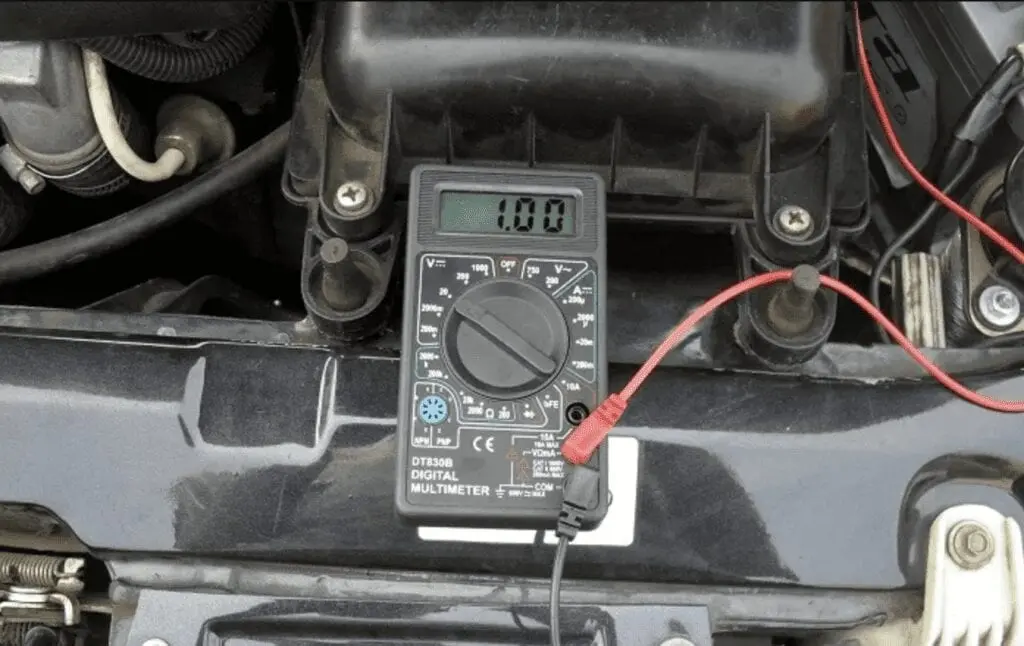
Many drivers from the VAZ 2110 family had problems with this unit. Today most owners of these vehicles know how to check the DFID and get it working properly or replace it with a new one. If you have a more modern car, it is not recommended to check and replace the sensor yourself. It is better to do the work at a specialized station and get a guarantee of the high quality of your proposals.
What are the first symptoms of DFID?
The MAF sensor not only measures but also monitors the air flow to the engine. The operation of all technical parts of the unit is controlled by computer systems, which in most cases are automatically controlled. This is why DFID's work is so important. This affects the quality of the power unit and the corresponding operating modes. These important roles in the car make sensor breakage a real problem.
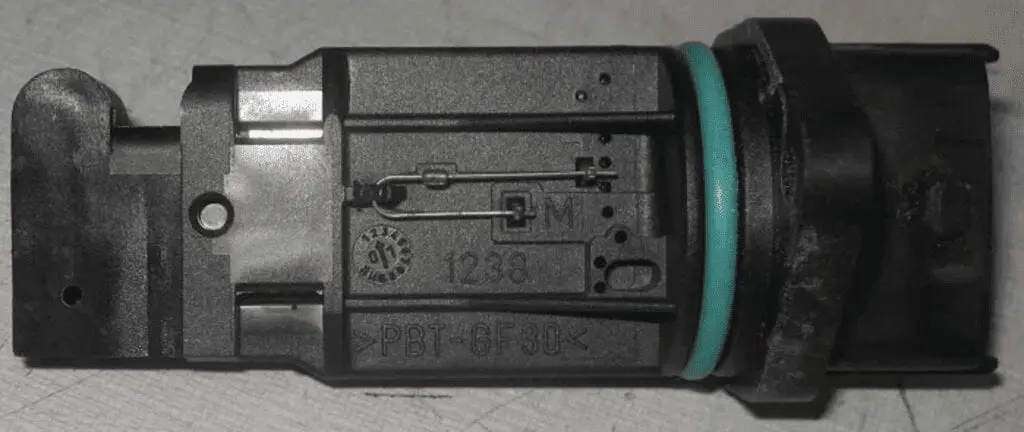
The main characteristics of a sensor malfunction can be described using a list of several malfunction symptoms. But it is necessary to take into account the fact that in some cases it is impossible to determine the origin of the malfunction symptoms. Sometimes it is easier to pay for high-quality diagnostics than to look for the causes of the malfunction yourself. Typical characteristics of DFID failure include the following behaviors:
- the Check Engine indicator on the instrument panel is on and engine diagnostics is required;
- gasoline consumption increases, while the increase can be quite large and unpleasant;
- when you stop near the store for a few minutes, starting the car becomes a real problem;
- The dynamics of the car decrease, acceleration slows down, and the tactic of pumping the pedal to the floor does not work at all;
- power is not felt especially on a hot engine, in cold mode it practically does not change;
- all problems and malfunctions occur in the car only after the engine has warmed up.
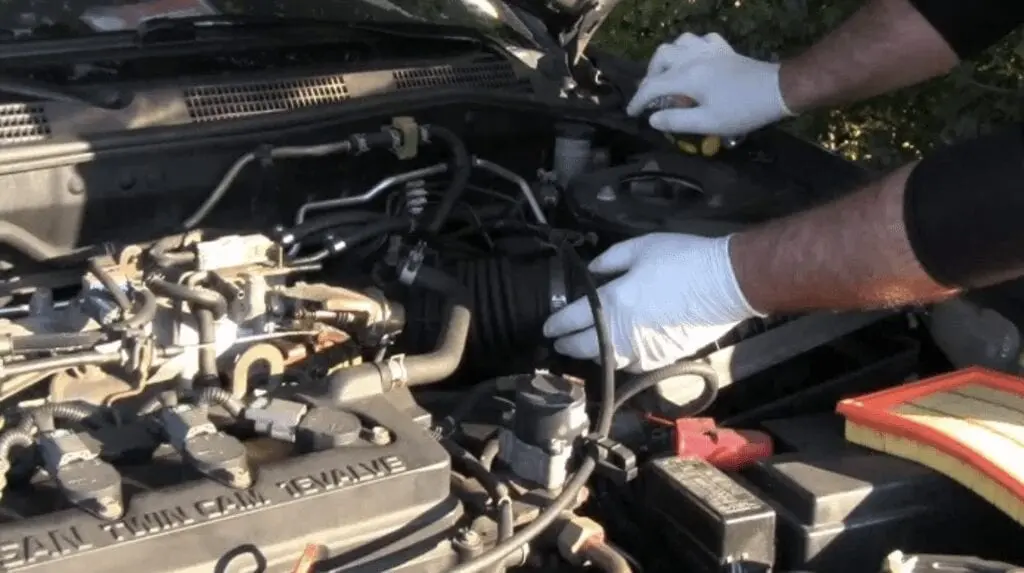
The real problem is that there is too much or too little air, so the powertrain cannot handle the fuel under normal conditions. This leads to the fact that normal operating conditions of the engine developed by the manufacturer are no longer possible. The engine is rather difficult in such situations. It is also worth taking into account the increase in fuel consumption and increased wear of the power unit.
In addition, if the combustion air in the engine is not supplied correctly, incomplete combustion of the fuel may occur. This problem is a serious side effect that can lead to serious consequences. If you pour unburned gasoline into the crankcase, where it mixes with oil, the quality of the lubricant decreases several times. This leads to increased friction in the engine and excessive wear of parts.
Check the DFID sensor yourself - five ways to deal with the problem
If you suspect that the mass air flow sensor is to blame for all your problems, it is worth checking your theory and getting a definite answer to the question. To do this, simply run diagnostics using one of the methods below. But before talking about sensory inspection techniques, here are a few arguments against self-diagnosis and personal maintenance of your vehicle.
The workshop technicians will do all the work much faster and without problems, because they have to deal with DFID almost every day. In your own troubleshooting efforts, you experiment with the machine at your own risk. However, this troubleshooting method is much cheaper and does not require a trip to a service center. The main ways to check for problems with a DFID sensor:
- Disconnect the sensor from the air supply system, in this case, the computer instructs to calculate the amount of air depending on the position of the valve in the engine. If, after turning off the sensor, the car starts to drive better, but increases speed, then there is a DFID malfunction.
- Reinstalling firmware during sensor diagnostics. This method makes sure that engine problems are not related to the alternative ECU firmware that may be the original cause of all your problems.
- Check DFID with a measuring device called a Multimer. Only some Bosch sensors can be checked this way. More detailed information about the tests can be found in the instructions for the vehicle or directly to the installed sensor.
- Inspection and visual assessment of the condition of the sensor. This traditional inspection system can often identify a problem. If the inside of the DFID is dusty, you can safely replace it and closely monitor the position of all O-rings.
- DFID sensor replacement This method is suitable for you if you do not want to carry out diagnostics and just want to install a new sensor. It is sufficient to simply replace that element and verify that the problem was hidden in that particular node.
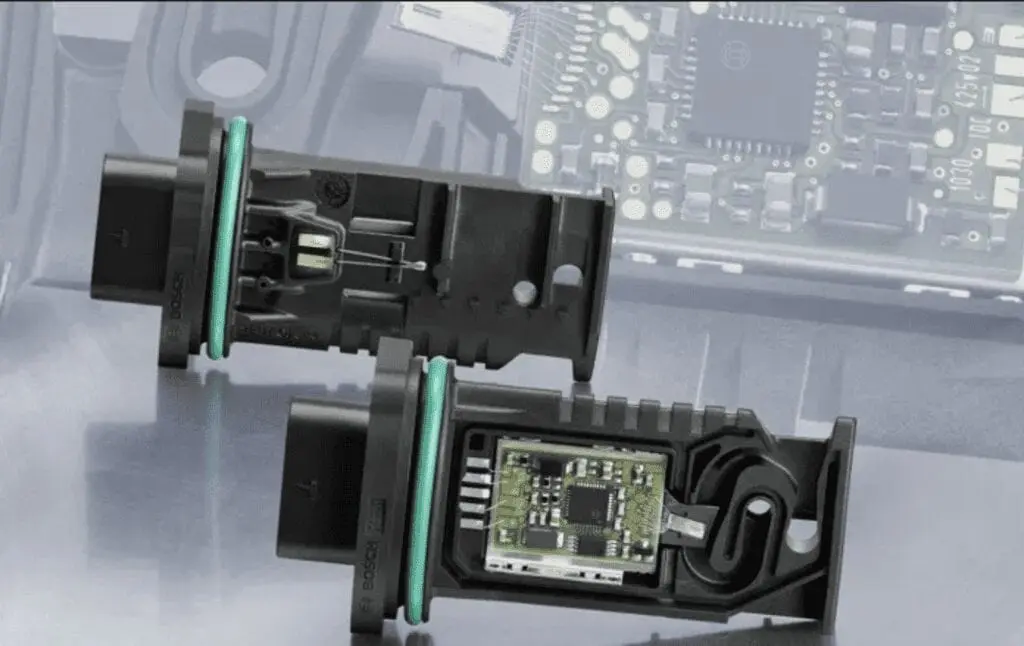
These are simple methods for diagnosing a mass flow sensor that will help you determine the most important points in the operation of this device. Of course, in a garage environment, it is easiest to perform the first and last option for diagnostics and repair. These are the most accurate and hassle-free ways to determine the health of sensors and regulate the required engine operating modes in a car without large financial costs.
However, it is better to diagnose sensor failure using special equipment. One of ordinary skill in the art is aware of the immediate signs of poor sensor node performance. Often they don't even need to start diagnostics to fix the problem. Despite the description of the methods of self-determination of all possible problems, we do not recommend independent intervention in the sensor operation system.
Conclusions:
A good solution to almost any problem with a car is a trip to a professional service, professional diagnostics and replacement of spare parts with original ones or those recommended by the manufacturer. But this is not always the case. Sometimes it is much easier and cheaper to carry out personal diagnostics of a machine using fairly simple and well-known methods that do not require special equipment.
If you want to try these methods, you can test the mass flow sensor yourself. The only downside to this process is that unsafe sensor installation will almost certainly ruin it in the next few months. Therefore, before installing, read the relevant chapter in the vehicle manual and pay attention to the required position of all rubber sealing strips on the device. Have you had to change your DFID sensor yourself?
What is an MAF sensor and what is its principle of operation and function?
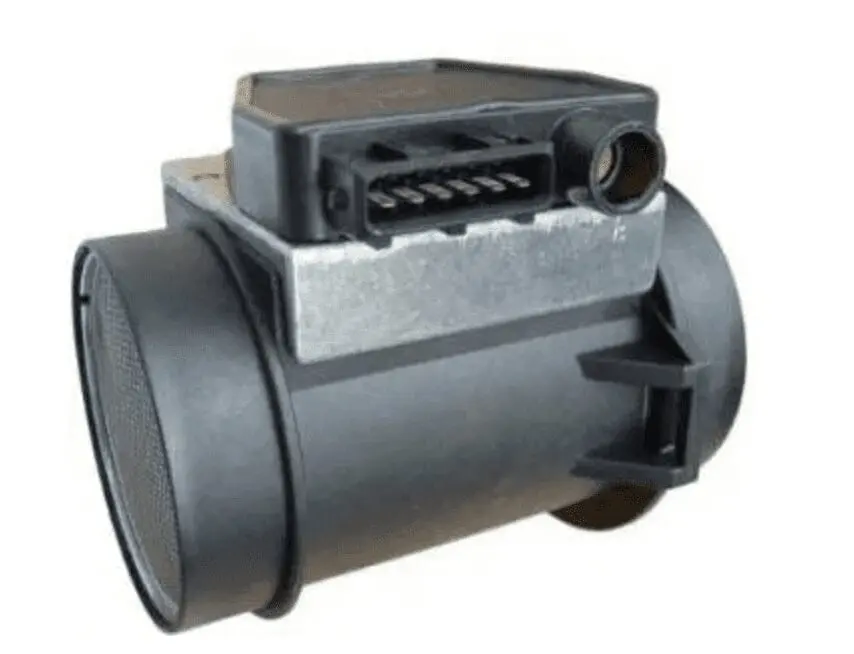
From the article you will learn what is the main symptom of a malfunction of the mass air flow sensor. But before even doing visual diagnostics, you need to talk a little about what kind of device it is, what its principle of operation is, but most importantly, pay attention to maintenance and repair.
The mass air flow sensor is required for the correct operation of the electronic control unit. Such systems are used only for injection engines. In other words, these are the majority of local cars produced after 2000.
Basic information about the airflow sensor
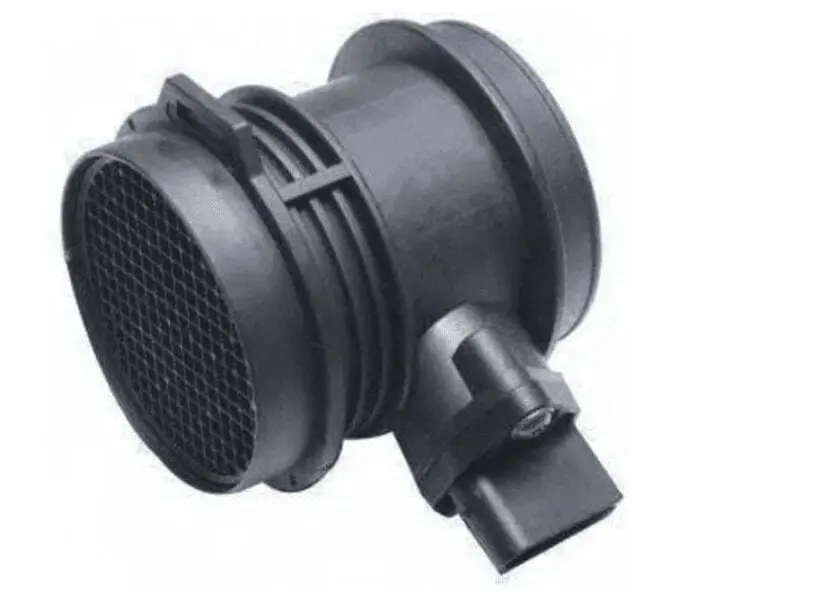
Abbreviated as DFID. It is used to measure all the air that enters the mixing orifice. It sends its signal directly to the electronic control unit. This MAF sensor is installed directly next to the air filter. More precisely, between it and the gas unit. The device of this device is so "delicate" that with its help it is necessary to measure only thoroughly cleaned air.
And now a little about how this sensor works. The internal combustion engine operates in such a way that during one working cycle it becomes necessary to supply gasoline and air to each cylinder in a strict ratio of 1 to 14. If this ratio changes, a significant loss of engine power will occur. Only if you adhere to this proportion will the engine operate in ideal mode.
Mass Air Flow Sensor Touch Functions
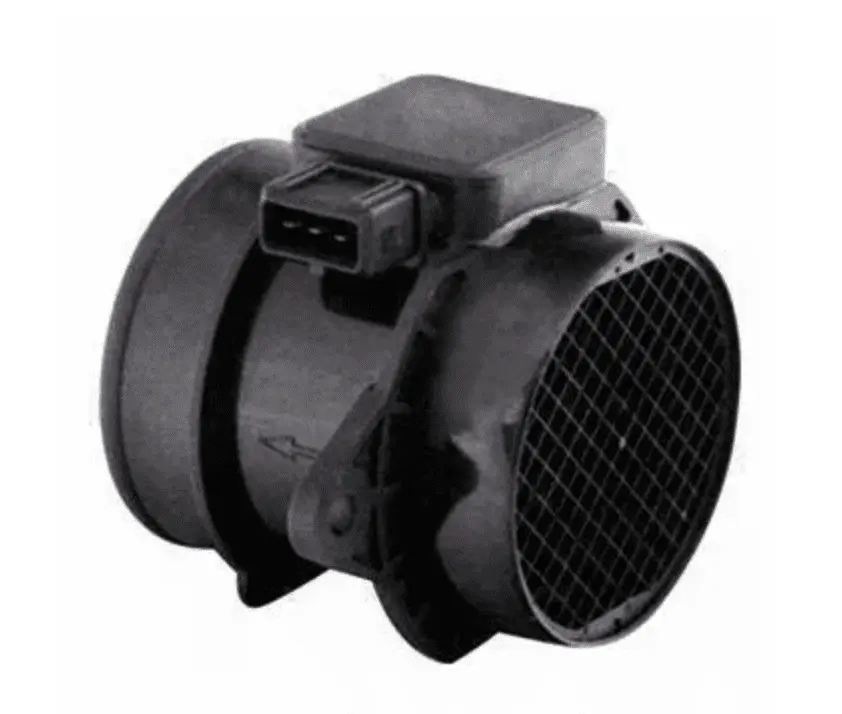
And it is with the help of DFID that all the air that enters the engine is measured. It first calculates the total amount of air, after which this information is sent digitally to the electronic control unit. The latter, based on these data, calculates the amount of gasoline that must be supplied for proper mixing. And he does it in the right proportion. In this case, the air flow sensor literally immediately reacts to changes in the engine operating mode. A symptom of a malfunctioning MAF sensor is a longer response when the accelerator (gas) pedal is depressed.
For example, you start to press the accelerator pedal harder. At this point, the air flow in the fuel rail increases. DFID notes this change and sends a command to the ECU. The latter, analyzing the input data, comparing them with the fuel map, selects the normal amount of gasoline. Another case is if you move evenly, i.e. without acceleration and braking. Then very little air is consumed. Therefore, gasoline will also be supplied in small quantities.
Processes during engine operation
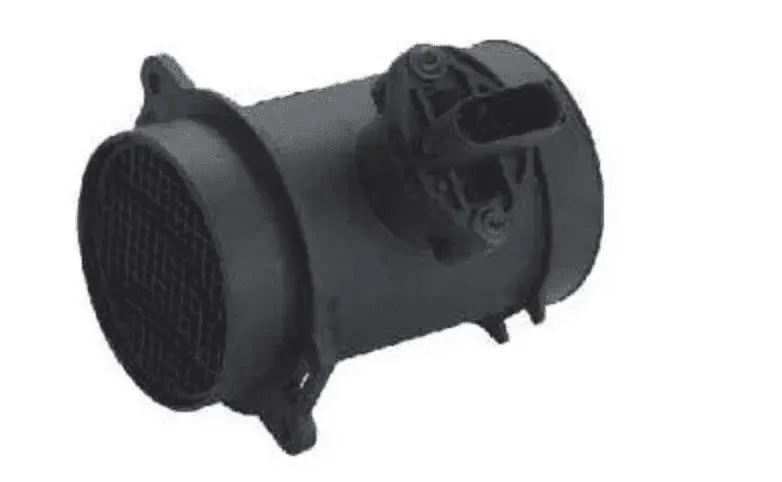
And now a little more about how all these processes proceed in an internal combustion engine. Here, elementary physics influences the work in many ways. For example, when you press the accelerator pedal, the valve stem opens abruptly. The more it opens, the more air begins to be sucked into the fuel injection system.
Therefore, when you press the accelerator pedal, the load increases, and when released, it decreases. We can say that DFID follows these changes. It is worth noting that the main symptom of a malfunction of the mass air flow sensor is a decrease in the dynamic properties of the car.
Design Features
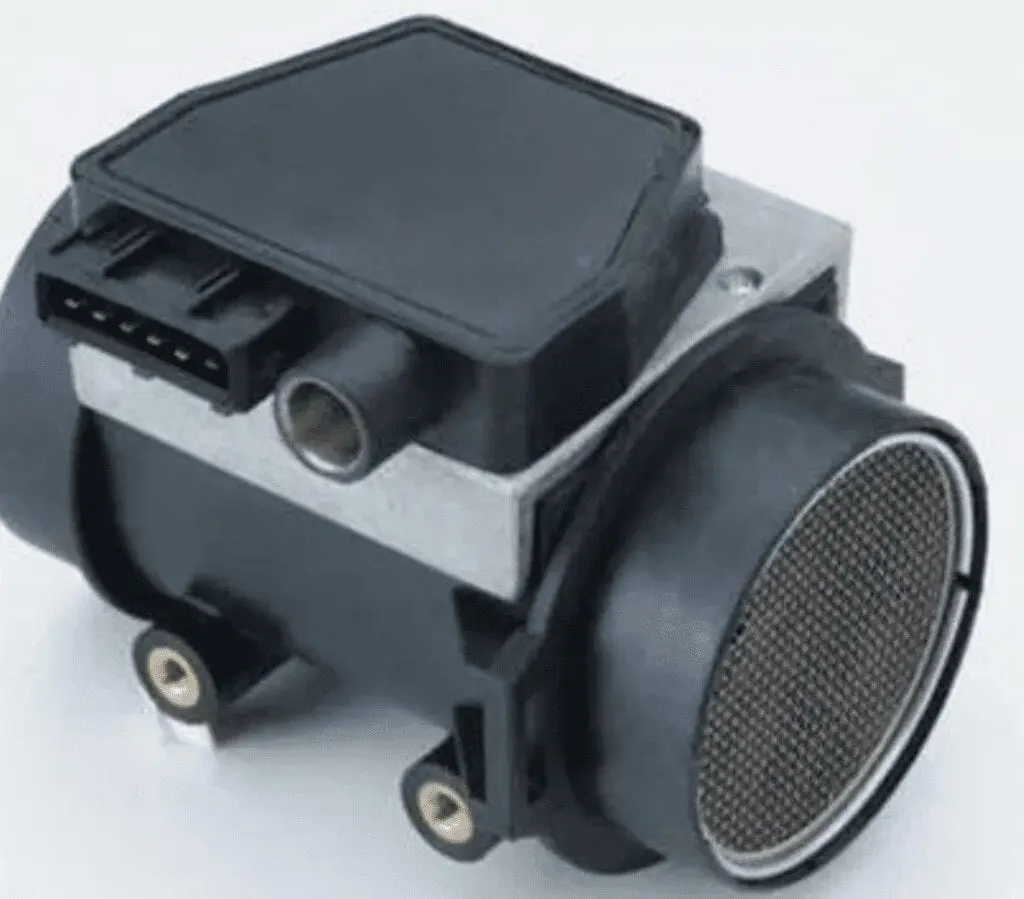
It is one of the most expensive sensors in an internal combustion engine control system. The reason for this is that it contains an expensive metal, namely platinum. The base of the sensor is a plastic tube of a strictly defined diameter. It is located between the filter and the choke. There is a thin platinum wire inside the box. Its diameter is about 70 micrometers.
Of course, it is very difficult to measure the passing air. In an internal combustion engine control system, air flow measurement is based on temperature measurement. Platinum bodies are subject to rapid heating. How much its temperature drops compared to the set value determines the amount of air passing through the sensor body. Look at the MAF sensor malfunctioning symptoms to see if it is okay.
MAF Sensor Device Maintenance
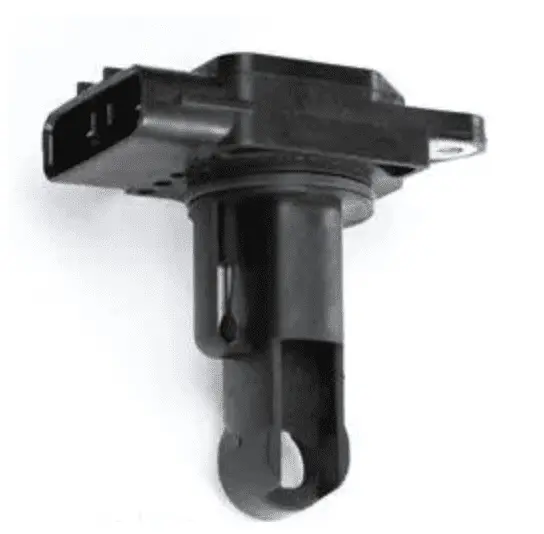
When the engine is running with an electronic control system, the sensor becomes dirty. To clean it, a special algorithm is installed in the control system. It allows you to heat platinum wire in just one second to a temperature of about a thousand degrees. If there is dirt on the surface of this wire, they immediately burn out without a trace. This cleans the MAF sensor. The signs of a malfunction of a particular design will be the same.
This procedure is performed every time the engine is stopped. DFID is very simple in design and highly reliable in operation. However, it is not recommended to repair the device itself. If a breakthrough occurs, it is best to contact competent diagnosticians and mechanics.
Disadvantages of MAF Sensor Assembly
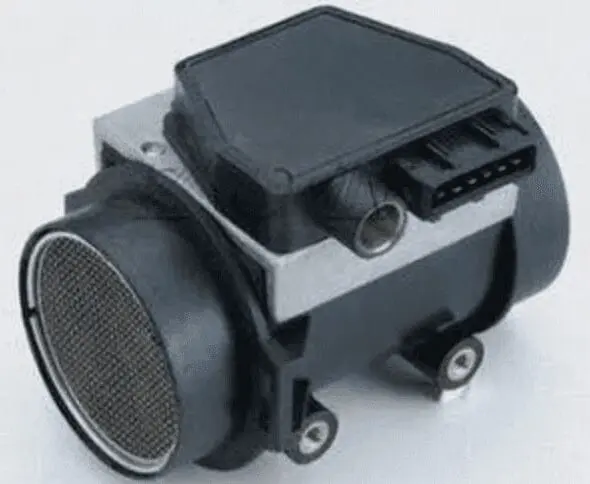
Please note that if the sensor fails, it is most effective to replace it with a new one. It cannot be repaired, which is its main drawback, as the cost of a new one sometimes exceeds $500. But there is another small drawback - the principle of operation. This disadvantage has every mass air flow sensor. The article discusses the symptoms of a malfunction (diesel or gasoline).
It measures the amount of air that has entered the throttle valve. But for the engine to work, it is important to know not the volume, but the mass. Of course, you also need to know the density of the air to perform the conversion. To do this, a measuring device is installed in the air intake hole, in the immediate vicinity of the temperature sensor.
How to increase service life
Try to change the air filter in time, as DFID will not be able to work for a long time if dirty air passes through it. Flushing the threads and the entire inner surface can be done using special sprays with a carburetor. Try to do everything carefully, do not touch the spirals. Otherwise "get" an expensive replacement for the air flow sensor.
A pressure sensor is often installed and is used to monitor the air flow in the combustion chambers. To increase the service life of the DFID, it is necessary to replace the air filter in a timely manner and pay attention to the cylinder-piston group. In particular, excessive wear on the piston rings will cause the platinum wire to be coated with oily carbon. This will gradually break the sensor.
Major accidents
You should know how to identify a failure of an airflow sensor. The internal combustion engine constantly changes its mode of operation. Different air / fuel mixture is required depending on speed and load. DFID is required to mix it correctly. It is sometimes called a flow meter.
As you already know, this allows you to determine and regulate the mass of air entering the fuel injection rail of the injection system. If your air flow sensor is working in ideal mode, this will ensure that the engine is working properly. Please note that such a device cannot be repaired even if you have a lot of tools and accessories.
Error symptoms
And now a little about what symptoms appear when the sensor fails. Often, when this element fails, the engine starts to idle intermittently, its speed is constantly changing. When you accelerate, the car begins to "think" for a long time, there is absolutely no dynamics. Often, the engine speed also decreases or increases at idle speed. And if you have to turn off the engine, it is very difficult and sometimes impossible. Therefore it is necessary to replace the MAF sensor. The previous one, errors that the ECU records, will inevitably lead to an engine error.
Please note that the sensor itself is not permanent. Small cracks or cuts can often be seen in the corrugation that connects the sensor to the throttle. If you suddenly notice that the Check Engine light comes on on the control panel and the above symptoms are present, then you can say that the flow sensor has become unusable. But don't rely on this alone. It is advisable to make a complete diagnosis of the engine. It is worth noting that the symptoms of a malfunctioning MAF sensor are very similar to those that occur, for example, when the TPS fails.
This mass air flow sensor is designed to provide information about the amount of air entering the cylinders of an internal combustion engine in the ECU. These devices are usually divided into several types - mechanical, film (hot wire and diaphragm), pressure sensors. The first type is considered obsolete and rarely used, while the rest are more common. There are a number of typical signs and reasons why a flow meter fails completely or partially. Then we'll look at them and talk about how to inspect, repair or replace the flowmeter.
What is a flow meter
As mentioned above, flow meters are designed to display the volume and control of air consumed by the engine. Before proceeding with the description of the principle of their work, it is necessary to raise the question of species. Ultimately it will depend on that and how it works.
Types of flowmeters
Flowmeter appearance
The first models were mechanical and were installed on the following fuel injection systems:
- reactive distributed injection;
- built-in electronic injection and Motronic electronic ignition;
- K-Jetronic;
- KE-Jetronic;
- The Jetronic.
The housing of the mechanical flow meter contains a shock absorber chamber, a measuring damper, a return spring, a damping shock absorber, a potentiometer, and a bypass (bypass) with an adjustable regulator.
In addition to mechanical flow meters, there are the following types of more advanced devices:
- hot ends;
- hot wire anemometer flowmeter;
- thick-walled diaphragm flowmeter;
- Manifold air pressure sensor.
Flowmeter working principle
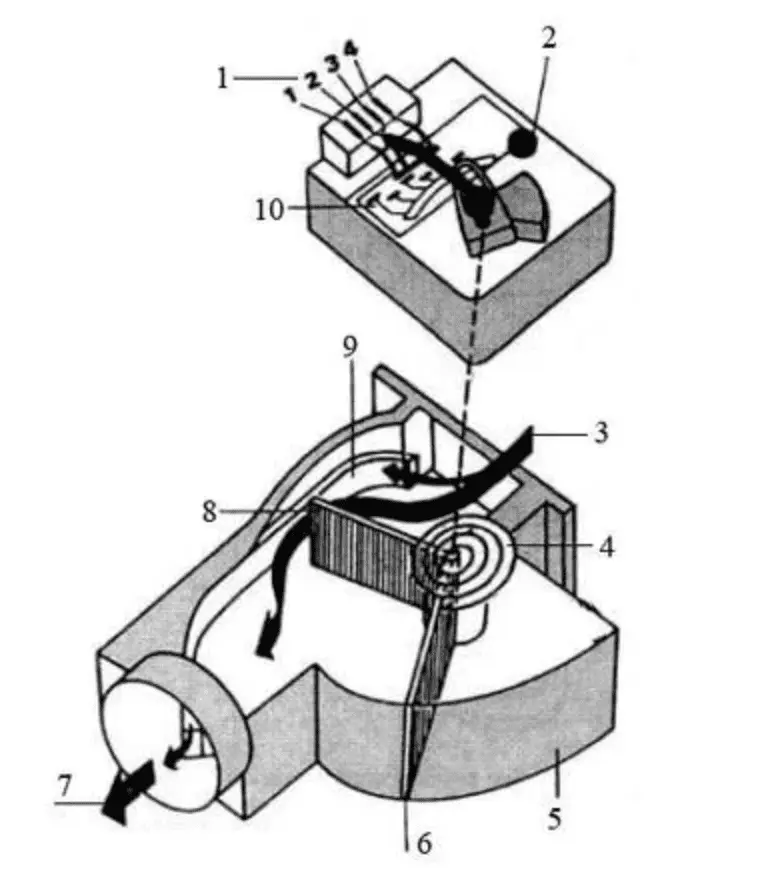
Mechanical scheme of the flowmeter. 1 - supply voltage from the electronic control unit; 2 – inlet air temperature sensor; 3 - air supply from the air filter; 4 - spiral spring; 5 - shock-absorbing chamber; 6 - damping chamber of the shock absorber; 7 - air supply to the throttle; 8 - air pressure valve; 9 - bypass channel; 10 - potentiometer
Let's start with a mechanical flow meter, the principle of which is based on how far the metering valve moves depending on the volume of air passing through. On the same axis as the measuring damper is the damper damper and the potentiometer (adjustable voltage divider). The latter is made in the form of an electronic circuit with soldered resistor rails. In the process of turning the valve, the slider moves along them and thereby changes the resistance. Accordingly, the voltage transmitted by the potentiometer is measured in accordance with the positive feedback and transmitted to the electronic control unit. To regulate the operation of the potentiometer, an inlet air temperature sensor is included in its circuit.
However, mechanical meters are now considered obsolete as they have been superseded by their electronic counterparts. They have no moving mechanical parts, therefore they are more reliable, give more accurate results and their operation does not depend on the temperature of the intake air.
Another name for such flow meters is an air flow sensor, which, in turn, is divided into two types depending on the sensor used:
- wire (MAF hot wire sensor);
- film (hot film flow sensor, HFM).
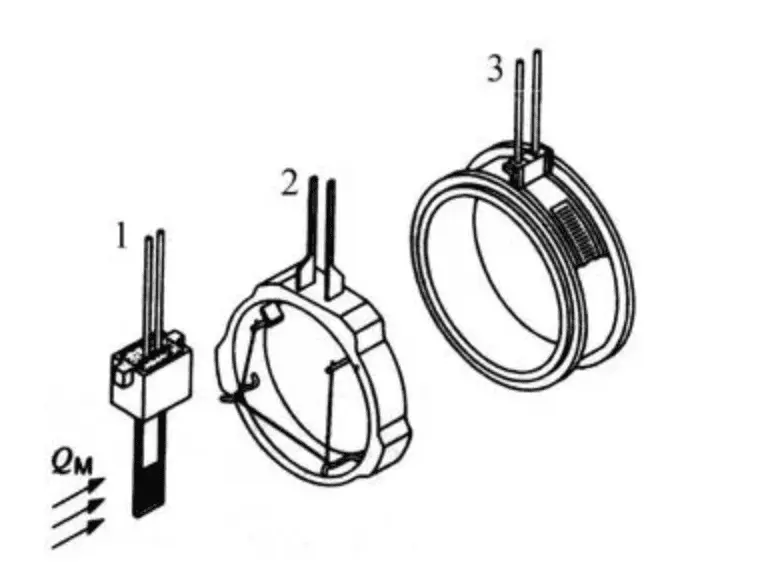
Air flow meter with heating element (thread). 1 – temperature sensor; 2 - sensor ring with a wired heating element; 3 - accurate rheostat; Qm - air flow per unit of time
The first type of device is based on the use of heated platinum. The electrical circuit constantly keeps the filament in a heated state (platinum was chosen because the metal has low resistance, does not oxidize and does not lend itself to aggressive chemical factors). The design provides that the passing air cools its surface. The electrical circuit has negative feedback, whereby when the coil cools, more electrical current is applied to it to maintain a constant temperature.
The circuit also has a converter whose task is to convert the value of the alternating current into a potential difference, i.e. voltage. There is a non-linear exponential relationship between the obtained voltage value and the missing air volume. The exact formula is programmed into the ECU and in accordance with it, it decides how much air is needed at one time or another.
The design of the meter shows the so-called self-cleaning mode. In this case, the platinum filament is heated to a temperature of + 1000 ° C. As a result of heating, various chemical elements, including dust, evaporate from its surface. However, due to this heating, the thread thickness gradually decreases. This leads, firstly, to errors in the sensor readings, and secondly, to gradual wear of the thread itself.
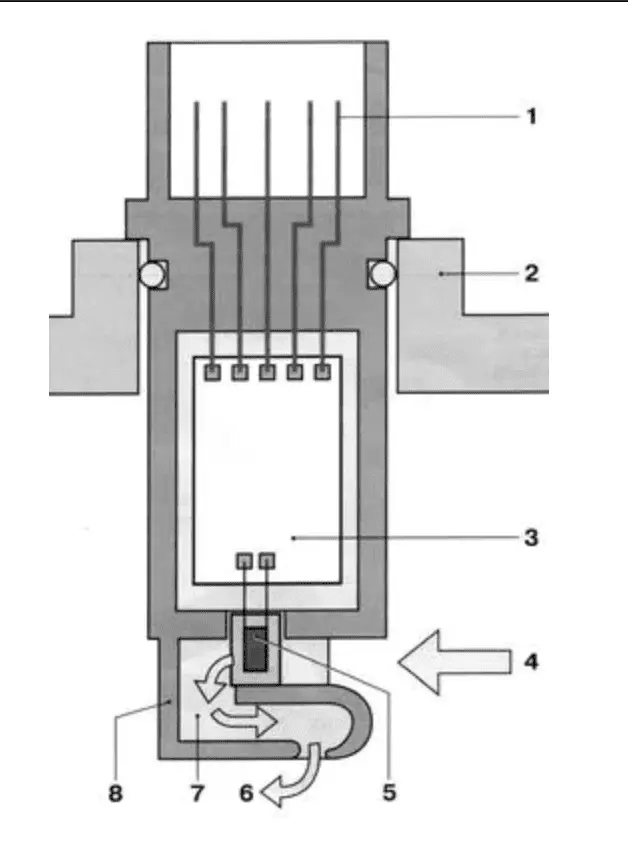
Hot wire anemometer mass flow meter circuit 1 - electrical connection pins, 2 - measuring tube or air filter housing, 3 - calculation circuit (hybrid circuit), 4 - air inlet, 5 - sensor element, 6 - air outlet, 7 - bypass channel, 8 – sensor body.
How air flow sensors work
Now consider the operation of airflow sensors. They are of two types - with a hot wire anemometer and based on a thick-walled diaphragm. Let's start with a description of the first.
This is the result of the evolution of the electric meter, but instead of a wire, in this case, a silicon crystal is used as a sensor element, on the surface of which several platinum layers are soldered, which are used as resistors. In particular:
- heater;
- two thermistors;
- intake air temperature sensor resistor.
The sensing element is located in the channel through which the air flows. It is constantly heated by the use of a heater. Once in the duct, the air changes its temperature, which is recorded by thermistors installed at both ends of the duct. The difference in their readings at both ends of the diaphragm is the potential difference, i.e. constant voltage (0 to 5 V). Most often, this analog signal is digitized in the form of electrical impulses that are transmitted directly to the car computer.
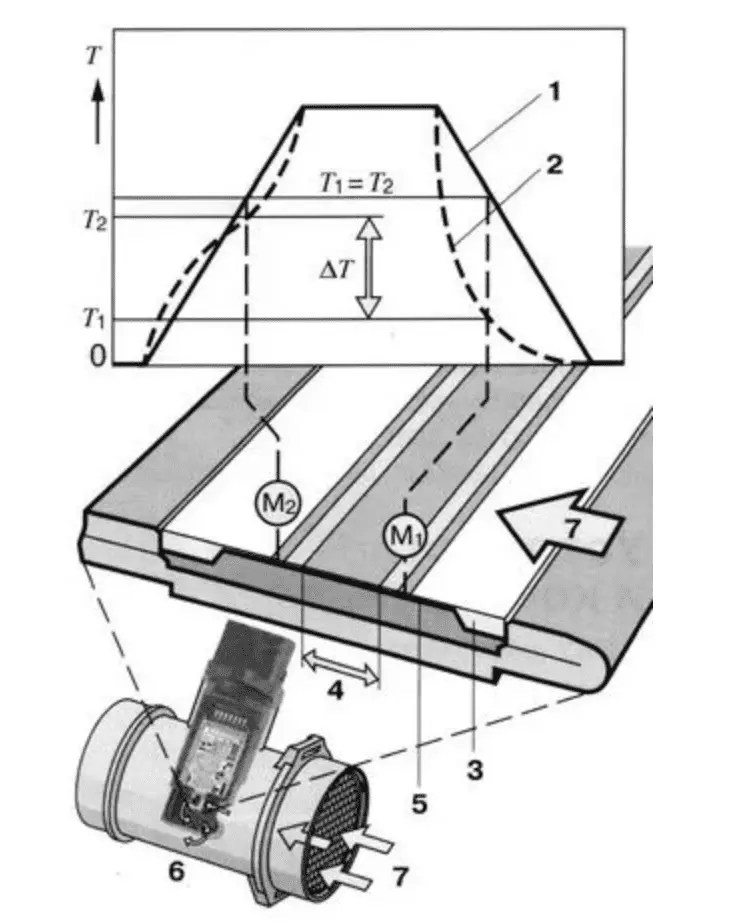
The principle of measuring the mass flow rate of an air-film hot-wire anemometer. 1 - temperature characteristic in the absence of air flow; 2 - temperature characteristic in the presence of air flow; 3 - sensitive element of the sensor; 4 – heating zone; 5 – sensor aperture; 6 – sensor with measuring tube; 7 - air flow; M1, M2 – measurement points, T1, T2 – temperature values at measurement points M1 and M2; ΔT - temperature difference
As for the filters of the second type, they are based on the use of a thick-walled diaphragm located on a ceramic base. Its active sensor detects changes in air vacuum in the intake manifold based on the deformation of the membrane diaphragm. With significant deformation, a corresponding dome with a diameter of 3 ... 5 mm and a height of about 100 microns is obtained. Inside are piezoelectric elements that convert mechanical effects into electrical signals, which are then transmitted to the ECU.
The principle of operation of the air pressure sensor
In modern vehicles with electronic ignition, air pressure sensors are used, which are considered more technologically advanced than the classic flow meters, operating according to the schemes described above. The sensor is located in the manifold and detects the pressure and load of the engine, as well as the amount of recirculated gases. In particular, it is connected to the intake manifold using a vacuum hose. During operation, a vacuum is generated in the manifold, which acts on the sensor membrane. There are strain gauges directly on the membrane, the electrical resistance of which changes depending on the position of the membrane.
The sensor operation algorithm consists in comparing atmospheric pressure and membrane pressure. The larger it is, the more the resistance and, therefore, the voltage supplied to the computer changes. The sensor is powered by 5 V DC, and the control signal is a pulse with a constant voltage from 1 to 4,5 V (in the first case, the engine is idling, and in the second case, the engine is running at maximum load). The computer directly calculates the mass amount of air, including based on the air density, its temperature and the number of revolutions of the crankshaft.
Due to the fact that the mass air flow sensor is a very vulnerable device and often fails, around the early 2000s, car manufacturers began to abandon their use in favor of engines with an air pressure sensor.
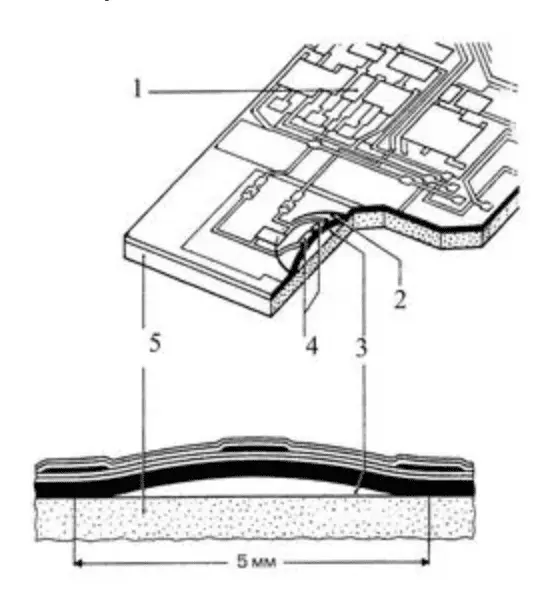
Air film flow meter. 1 – measuring circuit; 2 - diaphragm; pressure in the reference chamber - 3; 4 - measuring elements; 5 - ceramic substrate
Using the obtained data, the electronic control unit regulates the following parameters.
For gasoline engines:
- fuel injection time;
- its quantity;
- ignition start moment;
- the algorithm of the gasoline vapor recovery system.
For diesel engines:
- fuel injection time;
- algorithm of the exhaust gas recirculation system.
As you can see, the sensor device is simple, but it performs a number of key functions without which the operation of internal combustion engines would be impossible. Now let's move on to the signs and causes of errors in this node.
Signs and causes of errors
If the flow meter partially fails, the driver will notice one or more of the following situations. In particular:
- The engine will not start;
- unstable operation (floating speed) of the engine in idle mode, up to its stop;
- the dynamic characteristics of the car are reduced (during acceleration, the engine "breaks down" when you press the accelerator pedal);
- significant fuel consumption;
- on the dashboard dashboard.
These symptoms can be caused by other malfunctions in individual engine components, but among other things, it is necessary to check the operation of the air mass meter. Now let's consider the reasons for the described errors:

- Natural aging and sensor failure. This is especially true for relatively old cars with an original flow meter.
- Motor overload Due to overheating of the sensor and its individual components, incorrect data can be obtained from the ECU. This is due to the fact that with significant heating of the metal, its electrical resistance changes, and, accordingly, the calculated data on the amount of air passed through the device.
- Mechanical damage to the flow meter can be the result of various actions. For example, damage when replacing the air filter or other components near it, damage to the outlet during installation, etc.
- Moisture inside the box, the reason is quite rare, but this can happen if, for some reason, a large amount of water gets into the engine compartment. Therefore, a short circuit may occur in the sensor circuit.
As a rule, the flow meter cannot be repaired (except for mechanical samples) and must be replaced if damaged. Fortunately, the device is cheap, and the process of disassembly and assembly does not require much time and effort. However, before replacing the sensor, it is necessary to diagnose the sensor and try to clean the sensor with the carburetor.
How to check the air flow meter
The flow meter verification process is simple and can be done in several ways. Take a closer look at them.
Disconnecting the sensor
The easiest way is to disable the flowmeter. To do this, with the engine off, disconnect the power cord suitable for the sensor (usually red and black). Then start the engine and drive. If the Check Engine warning light comes on in the instrument panel, the idle speed is over 1500 rpm and the vehicle dynamics improves, which means yours is most likely at fault. However, we recommend additional diagnostics.
Scanning with a scanner
Another diagnostic method is the use of a special scanner to identify faults in the vehicle systems. Currently, there are a large number of such devices. More professional models are used at gas stations or service centers. However, there is a simpler solution for the average car owner.
It consists of installing special software on an Android smartphone or tablet. Using a cable and adapter, the gadget is connected to the car's ECU, and the above program allows you to get information about the error code. To decipher them, you must use reference books.
Popular adapters:

- K-Line 409,1;
- ELM327;
- OP COM.
When it comes to software, car owners often use the following software:
- Torque Pro;
- OBD Auto Doctor;
- ScanMaster Lite;
- BMWhat.
The most common error codes are:
- P0100 - mass or volume flow sensor circuit;
- P0102 - low signal level at the input of the air flow sensor circuit by mass or volume;
- P0103 - a signal about the high level of the ground input or the volume of the air flow of the sensor.
Using the listed hardware and software, you can not only look for an air mass meter error, but also make additional settings for the installed sensor or other components of the car.
Checking the meter with a multimeter
Check DMRV with a multimeter
Also a popular method for motorists is to check the flow meter with a multimeter. Since DFID BOSCH is the most popular in our country, the verification algorithm will be described for it:
- Turn the multimeter in DC voltage measurement mode. Set the upper limit so that the instrument can detect voltages up to 2 V.
- Start the car engine and open the cover.
- Find the flow meter directly. It is usually located on or behind the air filter housing.
- The red multimeter should be connected to the yellow wire of the sensor, and the black multimeter to the green one.
If the sensor is in good condition, the voltage on the multimeter screen should not exceed 1,05 V. If the voltage is much higher, then the sensor is completely or partially not working.
We will give you a table showing the value of the received voltage and the state of the sensor.
Visual inspection and cleaning of the flowmeter
If you do not have a scanner or associated software to diagnose the condition of the MAF sensor, a visual inspection should be performed to locate a malfunction of the MAF. The fact is that situations are not uncommon when dirt, oil or other technological fluids enter his body. This leads to errors when outputting data from the device.
For visual inspection, the first step is to disassemble the meter. Each car model may have its own nuances, but in general, the algorithm will be something like this:
Turn off the car ignition.
Use a wrench (usually 10) to disconnect the air hose through which air enters it.
Disconnect the cables listed in the previous paragraph from the sensor.
Disassemble the sensor carefully without losing the O-ring.
Then you need to conduct a visual inspection. In particular, you must ensure that all visible contacts are in good condition, not broken or oxidized. Also check for dust, debris and process fluids both inside the box and directly on the sensing element. Their presence can lead to errors in the readings.
Therefore, if such contamination is found, it is necessary to clean the box and the sensing element. For this, it is best to use an air compressor and rags (except for the film flow meter, it cannot be cleaned or blown out with compressed air).
Follow the cleaning procedure carefully
so as not to damage its internal components, especially the yarn.
There are other malfunctions of the mass air flow sensor. For example, if everything is in order with the device itself, the corrugated wire connecting it to the on-board computer may become unusable. As a result, the signal will be sent to the processor with a delay, which will negatively affect the operation of the motor. To make sure it works, you need to ring the wire.
Results
Finally, we will give some more tips on how to extend the life of an air flow meter. First, change the air filter regularly. Otherwise, the sensor will overheat and give incorrect data. Second, do not overheat the engine and make sure that the cooling system is working properly. Third, if cleaning the meter, follow this procedure carefully. Unfortunately, most modern mass air flow sensors cannot be repaired, therefore, if they completely or partially fail, it is necessary to make a proper replacement.
Questions and answers:
How much should the MAF sensor read? Motor 1.5 - consumption 9.5-10 kg / h (idle), 19-21 kg / h (2000 rpm). For other motors, the indicator is different (depending on the volume and number of valves).
What happens if the air flow sensor does not work? Idling will lose stability, the smoothness of the car will be disturbed, starting the internal combustion engine will be difficult or impossible. Loss of car dynamics.
